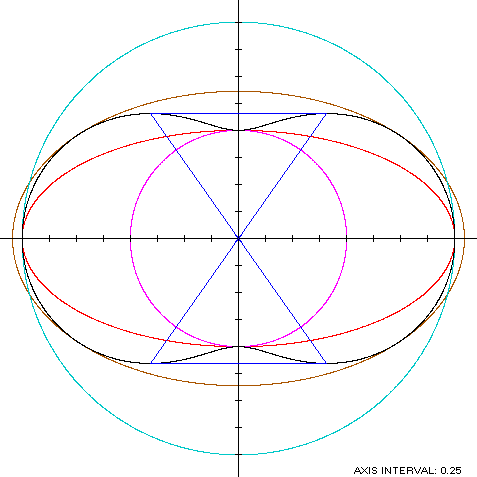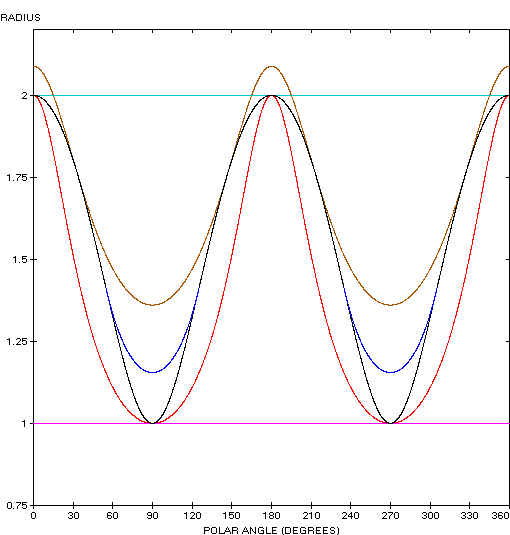Balmoral Software

Balmoral Software

r2(t) = 4 - 3sin2(t), 0 ≤ t < 2πThe curve is traced out in a counterclockwise direction, starting from its right edge at (2,0). Its abscissa extrema are (±2,0) and its ordinate extrema
 so the hippopede is non-convex
by the multiple local extrema
test. In the first quadrant, the ordinate maximum is achieved when
so the hippopede is non-convex
by the multiple local extrema
test. In the first quadrant, the ordinate maximum is achieved when
 The width x height of its
bounding rectangle is
The width x height of its
bounding rectangle is 
so by (L2), the perimeter of S is
and by (A2), the area of S is
 so by
(L2), the perimeter of the convex hull is
so by
(L2), the perimeter of the convex hull is
which is less than 1% shorter than that of the hippopede.
The line segments of the convex hull create two isosceles triangles with the origin, each having an area of
as shown in blue in the left diagram below. By (A2), the area of the convex hull is
which is about 3% more than the area of the hippopede.
x(t)y(t) = [4 - 3sin2(t)]cos(t)sin(t)This expression is maximized in the first quadrant at the complicated value
which is close to
 The
circumellipse dimensions are
The
circumellipse dimensions are
For verification, we have
Figure Parameters Perimeter Area Centroid Incircle R = 1 6.283185 3.141593 Inellipse a = 2
b = 19.688448 6.283185 Hippopede 10.6941 7.853982 Convex hull 10.622106 8.076415 Circumellipse 10.955915 8.926023 Circumcircle R = 2 12.566371 12.566371


Copyright © 2021 Balmoral Software (http://www.balmoralsoftware.com). All rights reserved.